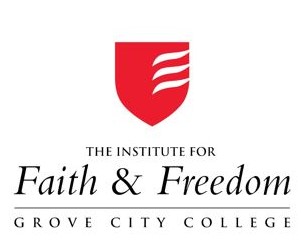Happiness Soars – Along With Inequality

For contemporary liberals, income inequality is the source of all evil and the root cause for the world’s social, racial and economic problems. Capital In The Twenty-First Century, by the French professor Thomas Piketty has become the most influential leftist book of our time – one of those weighty, cinder-block tomes that nobody reads but everyone cites to show their deep sophistication. In it, Piketty argues that the gap between rich and poor has become so acute, particularly in the United States, that catastrophic results will follow unless an activist government radically redistributes income. (At least that’s the common understanding of his argument – I’ll confess I haven’t read it either). Recently, reports from Hillary Clinton’s high command suggested that closing the income gap would be one of the two chief themes of her newly-minted campaign (the other being her unique ability to work across the aisle – and good luck to her in teaming with the GOP on radical income redistribution!)
Meanwhile, the New York Times over the weekend ran a fascinating piece by two researchers who’ve uncovered data that explode a whole series of leftist myths, puzzling any American who’s digested the current conventional wisdom. Steven Quartz is a professor of neuroscience and philosophy at CalTech who teamed with political scientist Anette Asp on a piece entitled “Unequal, Yet Happy.” They begin by describing the “gaping inequality” of America’s first Gilded Age and the huge social unrest that it generated – with militant labor unions, a rising socialist movement, and a generation of crusading progressive politicians who paved the way to the New Deal.
In this context, the authors express amazement that the response to the current Gilded Age seems to be “relative complacency.” They write, “despite soaring inequality, worsened by the Great Recession, and recent grumbling about the 1 percent, Americans remain fairly happy.” They go on to invoke the endlessly-recycled but deeply dubious claim that all of the wage gains since 2009 have gone “essentially to the top 1 percent, yet the proportion of Americans who say they are “thriving” has actually increased.”
This seeming anomaly reflects a factor in national polling that’s challenged analysts for nearly a half century: Americans regularly rate the state of society at large far more harshly than they rate their own lives. For instance, huge majorities express maximum satisfaction with the quality of their own marriages, jobs, neighborhoods, local schools and medical care but they evaluate the overall situation with the institution of the family, jobs, neighborhoods, education and the medical system as abysmal. I’ve written extensively in the past (in Hollywood Vs. America and elsewhere) on the media contribution to this persistent contradiction: since most people get most of their information about the larger world from media, and since media by their nature focus on bad news (plane crashes not safe landings; terrorist incidents not noble acts of charity) that emphasis would naturally create a misleadingly grim, desperate view of the state of things. Meanwhile, it’s reasonable to assume that most people can analyze their own experience more reliably than they can judge what’s going on in Washington or Teheran so it makes sense to trust the public’s positive view of the close-at-hand more than their gloomy vision of far away realities.
Even more startling than Quartz and Asp’s report that Americans as individuals display an increased sense of “thriving” is their update on “happiness inequality” – the percentage of the population who are either especially miserable or particularly satisfied. That gap, according to measures that they cite, “hit a 40 year low in 2010.” In the past, men have consistently expressed a greater tendency to describe themselves as unhappy than have women, but that distinction has all but disappeared. Whites have predictably registered higher levels of happiness than nonwhites, but the difference there has also narrowed significantly.
The greatest surprise for the two researchers involves the fact that “since wages began stagnating in the mid-1970’s…American happiness has not only stayed steady but converged.” They go on to explain this phenomenon in terms of the new basis for status in this society – with the Beatniks of the 1950’s beginning the disassociation of “cool” with material wealth. Among millennials in particular, financial success and display seem less significant than to other generations; you can achieve more self respect and standing within your own community by driving a fuel efficient Prius than some gas-guzzling SUV monster at twice the price. Apparently, Quartz and Asp develop this theme in a book called Cool: How The Brain’s Hidden Quest For Cool Drives Our Economy And Shapes Our World—a book that sounds intriguing enough that I might actually read it, if it’s less weighty and more accessible than Piketty.
Though their explanation for simultaneous reports of soaring inequality and soaring happiness may be elegant, sophisticated and persuasive, there are also far simpler, more direct means to account for the surprising development they’ve spotlighted.
First, they apparently rely on leftist economic analysis that has been powerfully challenged by Allen Reynolds, Robert Rector, Stephen Rose and many others from all sides of the political spectrum. The notion, for instance, that wages stagnated in “the mid 1970’s” ignores the basic facts of American life and the higher standard of living we enjoy in every sense. The statistics that doomsayers use to decry the “death of the middle class” tend to ignore the redistributive impact of vast government programs like Medicare and Food Stamps (the stats don’t register taxes or benefits), and miss the enormously increased purchasing power due to technological advances. Compared to the 1970’s, we live in bigger homes, drive better cars, eat better (and healthier) food, benefit from vastly more effective medical care with sharply increased life expectancy, and enjoy an unimaginably expanded array of entertainment, vacation and retirement options. The heart-breaking former image of the indigent elderly, reduced to living on the dole or dependent on stressed out children, has become a rarity in the United States. For better or worse, seniors do better than their younger counterparts and are found in vastly greater numbers on the golf course than at the soup kitchen. Moreover, despite the ubiquitous propaganda about declining opportunity for Americans to raise their own economic status, the percentage of adults with college degrees has more than quadrupled since 1970. Yes, higher education is often far too expensive and can impose obnoxious burdens of debt, but wouldn’t suddenly widespread hope of sending your offspring to university help to explain rising levels of reported happiness?
On a deeper level, the coexistence of inequality and happiness undermines a core liberal fallacy: that the most important goal for the economy is narrowing the gap between the top and the bottom. Most people don’t judge their own situation based upon the success of others who have more. If your neighbor runs a successful business and can afford a stylish remodel of his home, it helps your property values and your quality of life, rather than diminishing them.
The top priority for maximizing satisfaction, as the Quartz-Asp piece helps to prove, involves promoting the sort of economic growth that can improve circumstances for everyone. An obsession with shrinking the income gap, of reducing the prosperity of top-earners and reassigning that wealth to those who didn’t earn it, may gladden the hearts of bureaucrats and philosophers, but there’s no reason to believe it will increase happiness in a country where most citizens, believe it or not, already feel joy in own lives.




















